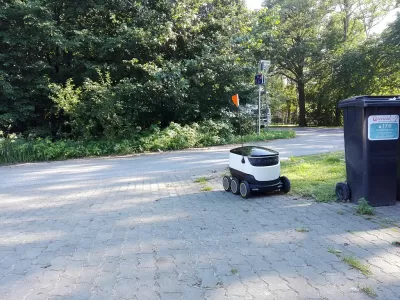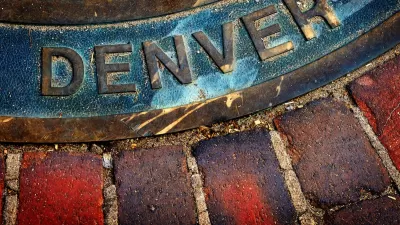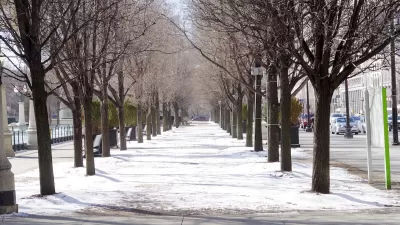Since 2017, 32 bills regulating or permitting "personal delivery devices"—sidewalk robots—have been introduced in 27 states.

In the era of two-day, same day, and even 30-minute delivery options for everything from toothpaste to wedding dresses, we tend to envision the world of increasingly rapid delivery as powered by drones that take to the air and drop orders off much the way that fictional storks deliver babies—right at your doorstep. However, chances are that—at least in the more immediate future—our deliveries are going to come to us in a more familiar way: by ground.
Often casually referred to as sidewalk robots, these “personal delivery devices” are electrically powered devices designed to deliver cargo locally. They’re equipped with automated driving technologies that allow them to operate with or without the remote support or supervision of a human. The products of companies spearheading the technology, like Starship and Amazon have devices that consist of a container on wheels that weigh in at roughly 100 pounds unloaded and roam at a pace of around one to three miles per hour. FedEx has a delivery robot as well—it’s a bit larger, heavier, and faster, rolling along at up to 10 miles per hour. Since 2017, 32 PDD bills have been introduced across 27 different states. Twenty one states have passed laws legalizing the use of at least some of these delivery robots on sidewalks.
But all these delivery robots move through the same pedestrian spaces that people do — think sidewalks, bike lanes, and crosswalks. They’ll be interacting with everything from people, dogs, people who use mobility devices, cyclists, cars, scooters, children, and more. While they may offer innovative deliveries of the future, Michael Clamann, a senior human factors engineer at the University of North Carolina’s Highway Safety Research Center who focuses on safety and federal legislation, has concerns surrounding the safety of PDDs, particularly when it comes to crash reporting and responsibility.
FULL STORY: Are Robots Coming to a Sidewalk Near You?

Alabama: Trump Terminates Settlements for Black Communities Harmed By Raw Sewage
Trump deemed the landmark civil rights agreement “illegal DEI and environmental justice policy.”

Planetizen Federal Action Tracker
A weekly monitor of how Trump’s orders and actions are impacting planners and planning in America.

How Atlanta Built 7,000 Housing Units in 3 Years
The city’s comprehensive, neighborhood-focused housing strategy focuses on identifying properties and land that can be repurposed for housing and encouraging development in underserved neighborhoods.

In Both Crashes and Crime, Public Transportation is Far Safer than Driving
Contrary to popular assumptions, public transportation has far lower crash and crime rates than automobile travel. For safer communities, improve and encourage transit travel.

Report: Zoning Reforms Should Complement Nashville’s Ambitious Transit Plan
Without reform, restrictive zoning codes will limit the impact of the city’s planned transit expansion and could exclude some of the residents who depend on transit the most.

Judge Orders Release of Frozen IRA, IIJA Funding
The decision is a victory for environmental groups who charged that freezing funds for critical infrastructure and disaster response programs caused “real and irreparable harm” to communities.
Urban Design for Planners 1: Software Tools
This six-course series explores essential urban design concepts using open source software and equips planners with the tools they need to participate fully in the urban design process.
Planning for Universal Design
Learn the tools for implementing Universal Design in planning regulations.
Jessamine County Fiscal Court
Caltrans
Institute for Housing and Urban Development Studies (IHS)
City of Grandview
Harvard GSD Executive Education
Toledo-Lucas County Plan Commissions
Salt Lake City
NYU Wagner Graduate School of Public Service





























